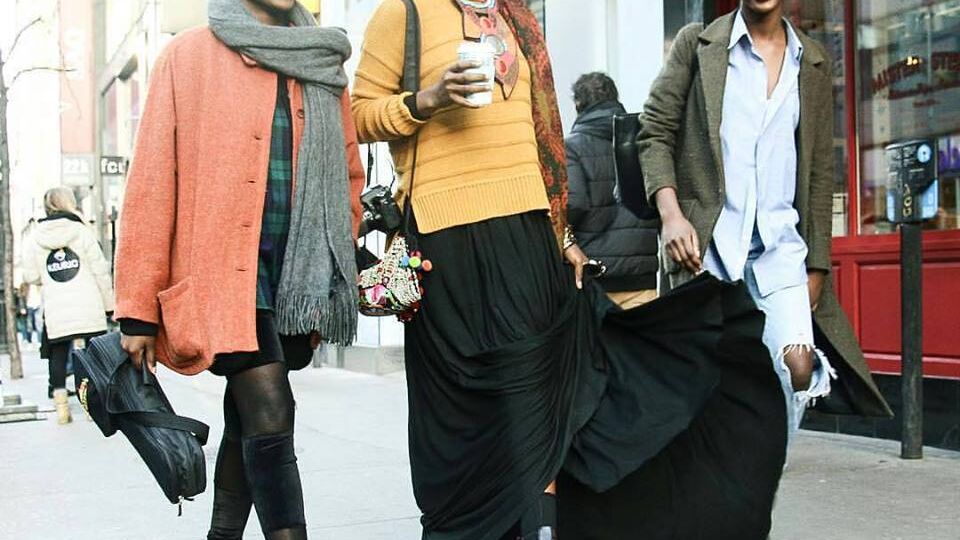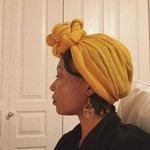July 1, 2017

By Lynda Bulimo
I am a teacher and quite frankly I don’t have time to do my hair every morning. This is because I am a proud lazy natural meaning that protective styles, wigs, and headwraps are my staples. Recently, donning a headwrap has become integral to my everyday style. However, as a professional, did I have some hesitance with wearing a headwrap for the first time? Of course, I did! Many young, African, female professionals in the diaspora have expressed some hesitancy with covering their hair in the workplace. We have been fed so much nonsense about how to “look professional” because of our natural hair textures, our figures, our features and so on not resembling our non-African/black colleagues. As a result, our generation is debunking and redefining standards of beauty and professionalism, in ways our parents wouldn’t have imagined when they first entered the workforce.
Where I teach, the dress code is fairly casual, with some teachers wearing jeans everyday and not being looked at strangely. Even though I knew nobody would tell me my headwrap looked unprofessional, (I usually wear it in a simple “unicorn” or criss-cross style) I still had some reservations. Then wash day fell on a Sunday (my day for weekly lesson planning) and I froze my DIY deep conditioner, and said this can wait another week. On Monday morning, I began wearing headwraps and small hoop earrings. Surprisingly, after a few days, my initial doubts gave way for a more authentic self to emerge at work. A redefined self who doesn’t need to conform or have my hair out and “on point” to look and be professional.
Moving forward, I decided to make headwrapping an everyday thing with inspiration from British author Zadie Smith. I am naturally drawn to women of colour in the diaspora who are writers. There is a timeless sophistication that oozes from the words they write to the effortless intentions behind the way they dress. Smith happens to be one of them and is often pictured with her signature criss-cross headwrap. In an interview last year with NPR, she states that “the headwrap began as a way of saving time, not being bothered to do my hair in any practical way, but also as a kind of … symbol or allegiance with exactly that kind of African ancestry. After all, many, many more women in the world wear something on their heads than don’t, and I like to be part of that sisterhood.” The idea of being part of a sisterhood by simply wearing a headwrap is an empowering sentiment. I often reflect on Smith’s words to shake off any doubts with wearing a headwrap in a professional setting. Where I live the teaching profession is not diverse and I would love to see significantly more young African females in the diaspora going into the field of Education. But for now, me wearing a headwrap as a teacher means representation of a whole sisterhood making a difference in this world.
Present day, my students are an additional source of inspiration for embracing the headwrap. The cultural diversity in my classes energizes me and I am often told by students “we understand you.” That understanding comes with how I teach, how I can relate to their experiences as immigrants and how I present myself. My authentic self who loves to wear headwraps as a time saver, a fashion statement, and as cultural expression. It is rather incredible that one piece of cloth on my head can represent all of these things and it fits with my professional self. It does not hinder my pedagogy. The headwrap still makes some staff turn their heads in bemusement, but my students see it as normal. When I get my hair braided or leave out my natural hair again – it will be normal. When I go back to headwraps, it will be normal. The way I change up my crown often puts a smile on my students face and they respect me as a teacher, their “cool teacher.” Normalizing difference in the teaching profession is what I’m doing by being my authentic self. The self that is no longer worried about how I will be perceived because I don’t conform to always having my hair done or “blending in.”

Lynda Bulimo
Writer
Lynda is an educator who loves to capture all the places and experiences she lives through writing. Born in Kenya, she grew up in the UK and now lives in Canada. As a critical observer of culture, language, aesthetics and identity, SAYASPORA is a platform for her to share and create important stories of young African women in the diaspora that come with complexity and valuable material to learn.
Images credits:
Christian Atanga for Fanm Djanm headwraps





